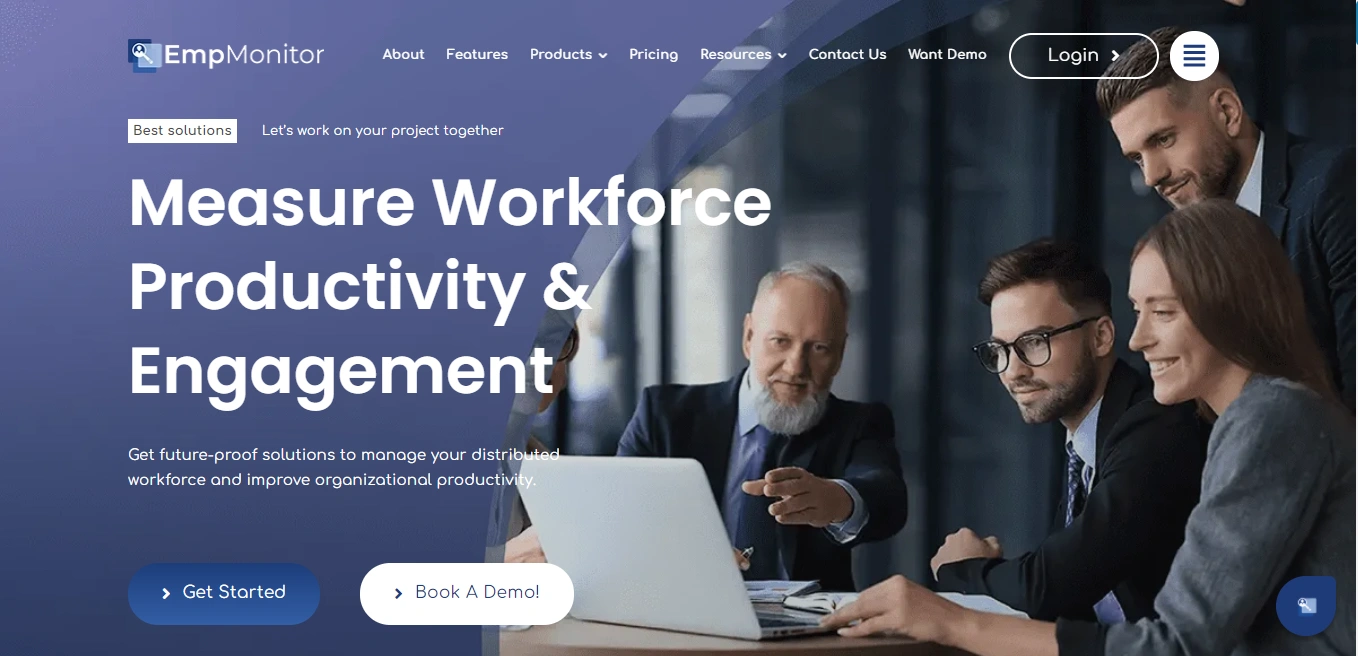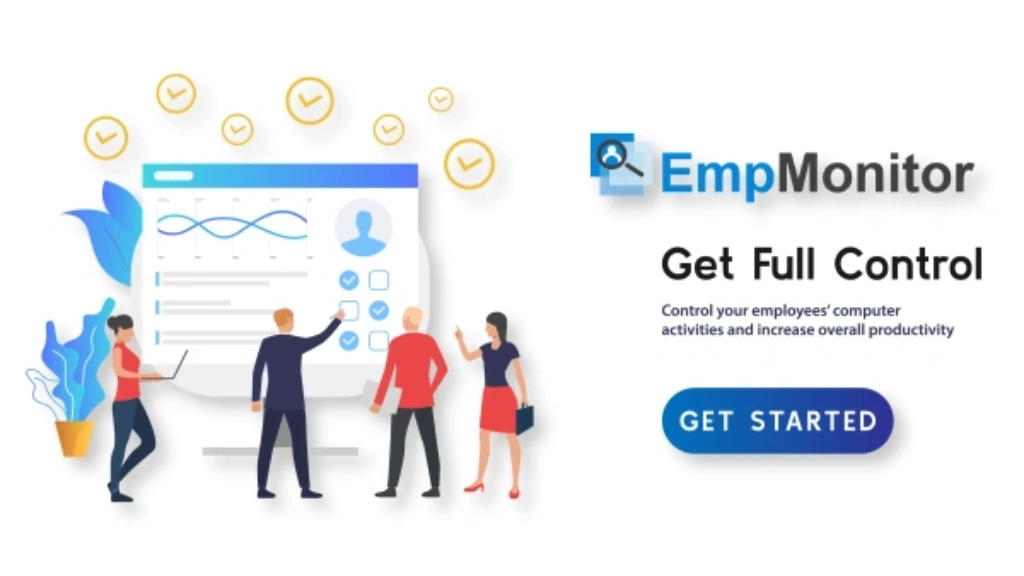Workplaces are ecosystems of collaboration, innovation, and productivity. But like any ecosystem, they can be disrupted by behaviors that hinder progress. Counterproductive work behavior (CWB) is one such disruptor—a silent drain on productivity, morale, and organizational success. From tardiness to workplace bullying, these behaviors can manifest in various forms, often going unnoticed until they’ve caused significant damage.
Still not to worry— The counterproductive work behavior isn’t inevitable, however, organizations can foster a culture of productivity and positivity by understanding its types, recognizing its impact, and implementing effective strategies. This blog will examine the various forms of counterproductive work behavior, their effects, and practical solutions to address them.
Listen To The Podcast Now
What Is Counterproductive Work Behavior?
Counterproductive work behavior refers to actions or habits that harm an organization, its employees, or both. These behaviors can range from minor infractions, like excessive breaks, to severe issues, such as workplace sabotage. While some CWBs are intentional, others stem from stress, lack of engagement, or poor communication.
Understanding these behaviors is the first step toward mitigating their impact. Let’s dive into the most common types of counterproductive work behavior and how they affect workplaces.
7 Counterproductive Work Behavior Types
Counterproductive work behavior comes in various forms, each impacting productivity and morale in many ways. Here’s a look at seven common types:
1. Withdrawal: The Silent Productivity Killer
Withdrawal is one of the most subtle yet damaging forms of counterproductive work behavior. It includes absenteeism, tardiness, and disengagement. Employees who withdraw may be physically present but mentally checked out, leading to missed deadlines and subpar work quality.
Why It Happens:
- Burnout from overwork
- Lack of motivation or engagement
- Personal issues spilling into professional life
The Impact:
Withdrawal doesn’t just affect the individual; it creates a ripple effect. Teams may struggle to meet goals, and managers may spend valuable time addressing attendance issues rather than focusing on strategic tasks.
How to Address It:
- Implement Clear Attendance Policies:
Clear and well-communicated attendance policies set expectations for punctuality and attendance. Outline what constitutes tardiness, absenteeism, and acceptable reasons for missing work. Include procedures for reporting absences and consequences for repeated violations. This transparency ensures everyone is on the same page and reduces confusion. - Foster a Supportive Work Environment:
Employees may show up and engage when they feel valued and supported. Foster open dialogue, celebrate accomplishments, and create avenues for career development. A positive work enviornment culture reduces disengagement and motivates employees to contribute actively. - Encourage Work-Life Balance:
Burnout is a leading cause of withdrawal. Encourage employees to maintain a healthy work-life balance by supporting regular breaks, the use of vacation time, and disconnecting from work once their day ends. Flexible schedules or remote work options can help employees manage personal and professional responsibilities, reducing stress and absenteeism.
We’ll explore a more overt form of counterproductive work behavior: workplace abuse.
2. Abuse: When Words and Actions Hurt
Workplace abuse encompasses behaviors like bullying, harassment, and verbal aggression. These actions create a toxic environment, making it difficult for employees to focus on tasks.
Examples of counterproductive work behavior and abuse:
- Gossiping about colleagues
- Publicly criticizing or belittling others
- Sexual harassment or discriminatory remarks
The Impact:
Abuse erodes trust and morale. Victims may experience anxiety, depression, or even physical health issues, leading to increased absenteeism and turnover.
How to Address It:
- Establish a Zero-Tolerance Policy for Abuse:
A zero-tolerance policy sends a clear message that abusive behavior—whether verbal, physical, or emotional—will not be tolerated. This policy should define what constitutes abuse, outline the consequences for such actions, and be communicated to all employees. By setting firm boundaries, organizations create a culture where respect and professionalism are non-negotiable. - Provide Training on Respectful Communication and Conflict Resolution:
Many instances of abuse stem from misunderstandings, poor communication, or unresolved conflicts. Regular training sessions empower employees to communicate effectively, resolve conflicts constructively, and create a more collaborative work environment. Training should also emphasize empathy and inclusivity to help employees understand the impact of their words and actions. - Create Safe Channels for Reporting Incidents Without Fear of Retaliation:
Employees often hesitate to report abuse due to fear of backlash or not being taken seriously. Establishing confidential and accessible reporting mechanisms—such as anonymous hotlines, dedicated HR representatives, or third-party mediators—ensures that victims feel safe coming forward. It is crucial to act promptly on reports, investigate thoroughly, and protect whistleblowers from retaliation to build trust in the system.
While abuse is a glaring issue, theft—another form of counterproductive work behavior—can be equally damaging. Let’s take a closer look.
3. Theft: More Than Just Stealing Office Supplies
Theft in the workplace isn’t limited to physical items. It can also include stealing time, data, or intellectual property. For example, an employee might falsify timesheets or share confidential information with competitors.
Why It Happens:
- Financial pressures
- Lack of loyalty to the organization
- Perceived inequities in pay or treatment
The Impact:
Theft undermines trust and can lead to significant financial losses. It also creates a culture of suspicion, which can harm team dynamics.
How to Address It:
Implement Strict Policies And Consequences
Establish clear rules on what constitutes theft, from stealing office supplies to time fraud or data breaches. Communicate these policies to employees and enforce strict consequences to deter dishonest behavior. Consistent enforcement ensures fairness and accountability.
Use Productivity Monitoring Software
Use productivity monitoring software like EmpMonitor, which helps in tracking work hours and activities and helps prevent time theft, such as falsifying timesheets or taking excessive breaks. Monitoring resource usage can also detect unauthorized access or misuse. Identifying suspicious patterns allows businesses to take proactive measures.
Foster a Culture of Transparency and Fairness
Encouraging open communication helps address employee concerns, reducing resentment that might lead to theft. Fair compensation and recognition prevent feelings of injustice, while trust within the organization makes employees less likely to engage in dishonest activities.
Next, we’ll examine a more extreme form of counterproductive work behavior: sabotage.
4. Sabotage: Intentional Acts of Harm
Sabotage involves deliberate actions to harm an organization or its employees. This could include destroying company property, spreading false rumors, or undermining projects.
Examples of Sabotage:
- Deleting important files
- Sharing trade secrets with competitors
- Intentionally delaying projects
The Impact:
Sabotage can have devastating consequences, from financial losses to reputational damage. It also creates a climate of fear and mistrust.
How To Address Workplace Misconduct
Conduct Thorough Background Checks
Screening candidates before hiring helps identify any past misconduct or red flags. Verifying work history, references, and criminal records ensures that new hires align with company values and ethics.
Monitor Employee Behavior
Keeping an eye on workplace interactions can help detect early signs of dissatisfaction, frustration, or misconduct. Subtle changes in attitude or productivity may indicate underlying issues that need attention before they escalate.
Address Conflicts and Grievances Promptly
Creating an open environment where employees feel comfortable reporting issues prevents minor conflicts from turning into major problems. Resolving disputes quickly and fairly fosters a positive work culture and reduces the risk of workplace misconduct.
While sabotage is rare, production deviance is a more common issue. Let’s explore this next.
Also Read
Increase Productivity In Your Workplace | 13 Best Tips That Actually Work
How To Create Positive Work Environment In 09 Steps
5. Production Deviance: When Work Goes Wrong
Production deviance occurs when employees intentionally perform their tasks incorrectly or inefficiently. This could be due to dissatisfaction, lack of training, or even personal grievances.
Examples of Production Deviance:
- Purposely making errors on reports
- Ignoring safety protocols
- Deliberately slowing down work processes
The Impact:
Production deviance reduces output quality and can lead to costly mistakes. It also frustrates colleagues who must pick up the slack.
How To Address Low Productivity
Provide Regular Training and Feedback
Continuous learning opportunities help employees develop the skills they need to perform efficiently. Regular feedback ensures they stay on track, understand expectations, and receive guidance on improving their performance.
Address Underlying Issues
Low productivity often stems from job dissatisfaction, lack of resources, or unclear goals. Identifying these challenges and providing the necessary support—whether through better tools, clearer communication, or workload adjustments—helps employees stay engaged and efficient.
Recognize and Reward Productive Behavior
Acknowledging hard work boosts motivation and encourages employees to maintain high performance. Whether through bonuses, promotions, or simple appreciation, recognition fosters a positive work environment where employees feel valued and inspired to do their best.
In addition to these five types, other forms of counterproductive work behavior deserve attention. Let’s delve into a few more.
6. Digital Loafing: The Modern Time-Waster
With the rise of technology, digital loafing has become a prevalent issue. Employees may spend hours scrolling through social media, shopping online, or watching videos instead of working.
Why It Happens:
- Lack of engagement or interest in tasks
- Poor time management skills
- Unclear expectations from management
The Impact:
Digital loafing reduces productivity and can lead to missed deadlines.It can also create a negative precedent for the rest of the team.
How To Address Excessive Social Media Use At Work
Create a Social Media Policy with Employee Input
Establish clear guidelines on when and how employees can use social media during work hours. Involving them in the policy-making process ensures fairness and increases compliance. A balanced approach prevents misuse while allowing reasonable access.
Use Productivity Management Tools
Implementing software that tracks online activity helps identify excessive non-work-related browsing. Setting limits on social media usage during work hours can improve focus without completely restricting access, maintaining a healthy balance between work and personal time.
Encourage Regular Breaks
Allowing scheduled breaks throughout the day reduces the urge to browse social media during work hours. Short breaks can improve productivity and concentration, ensuring employees stay engaged without feeling the need to sneak in distractions.
Another common issue is communication breakdowns, which can exacerbate counterproductive work behavior. Let’s explore this next.
7. Breakdowns in Communication: The Root of Many Problems
Poor communication can lead to misunderstandings, duplicated efforts, and missed deadlines. It’s a breeding ground for counterproductive behavior.
Examples of Communication Breakdowns:
- Failing to clarify project expectations
- Ignoring emails or messages
- Withholding important information
The Impact:
Communication breakdowns waste time and resources. They also frustrate employees, leading to disengagement and withdrawal.
How To Address Communication Issues
Establish Clear Communication Protocols
Setting clear guidelines on how and when to communicate ensures that important information is shared efficiently. Standardizing communication channels prevents misunderstandings and keeps everyone on the same page.
Leverage Collaboration Tools
Platforms like Microsoft Teams make it easier for teams to stay connected, organize tasks, and track progress in real-time. Using the right tools streamlines workflows reduces delays, and ensures seamless collaboration.
Encourage Open Dialogue and Feedback
Creating an environment where employees feel comfortable sharing ideas and concerns fosters better teamwork. Open communication strengthens relationships, improves problem-solving, and enhances overall productivity.
Next, let’s explore the impact of counterproductive work behavior and how addressing it can lead to a more efficient and positive workplace.
Why Addressing Counterproductive Work Behavior Matters
Counterproductive work behavior (CWB) isn’t just a minor annoyance that can be brushed aside. It’s a pervasive issue that can undermine the very foundation of an organization. If left unchecked, these behaviors can result in decreased productivity and contribute to a toxic workplace culture. Addressing counterproductive behavior isn’t just about fixing isolated problems—it’s about creating an environment where employees feel motivated, valued, and empowered to do their best work.
Here’s why tackling counterproductive work behavior is essential for organizational success:
1. Boost Productivity and Efficiency
Counterproductive behaviors, such as tardiness, digital loafing, or workplace abuse, directly impact productivity. Employees who engage in these behaviors often divert time and resources from meaningful work, leading to missed deadlines, lower-quality output, and inefficiencies across teams.
By addressing these behaviors, organizations can:
- Minimize time wasted on non-work-related activities.
- Ensure employees are focused and engaged during work hours.
- Streamline processes to maximize efficiency.
For example, implementing clear policies on tardiness or using productivity monitoring software can help employees stay on track and reduce distractions, hence increasing productivity.
2. Improve Employee Morale and Retention
Counterproductive behaviors don’t just affect the individuals involved—they impact the entire team. When employees witness bullying, theft, or sabotage, it creates a sense of unease and dissatisfaction. Over time, this can lead to disengagement, burnout, and even turnover.
Addressing these behaviors fosters a healthier workplace culture where employees feel respected and supported. This, in turn, boosts morale and encourages employees to stay with the organization long-term.
For instance, creating a zero-tolerance policy for workplace abuse and providing channels for employees to voice their concerns can make them feel safer and more valued.
3. Create a Positive Workplace Culture
A workplace culture is defined by the behaviors that are encouraged—or tolerated. When counterproductive behaviors go unaddressed, they inform that such actions are acceptable. It can erode trust, collaboration, and teamwork.
On the other hand, addressing these behaviors head-on helps establish a culture of accountability, respect, and positivity. Employees are more likely to exhibit organizational citizenship behaviors—going above and beyond their job roles—when they feel their workplace is fair and supportive.
For example, recognizing and rewarding productive work behavior can motivate employees to contribute positively to the organization.
The Role of Leadership in Curbing Counterproductive Behavior
Leaders are the cornerstone of any effort to address counterproductive work behavior. Their actions, attitudes, and decisions set the tone for the entire organization. Here’s how effective leadership can make a difference:
1. Setting Clear Expectations
Employees need to know what’s expected of them. Leaders should communicate workplace policies, performance standards, and the consequences of counterproductive behavior. This clarity helps employees understand the boundaries and reduces the likelihood of unintentional misconduct.
2. Providing Support
Sometimes, counterproductive behaviors stem from underlying issues like stress, lack of training, or personal challenges. Leaders who offer support—whether through mentorship, resources, or flexible work arrangements—can help employees overcome these challenges and refocus on their work.
3. Leading by Example
Leaders who model positive behaviors inspire their teams to do the same. When employees see their managers demonstrating respect, punctuality, and professionalism, they’re more likely to follow suit.
The Role of Technology In Addressing Counterproductive Behavior
While leadership is critical, technology can also play a valuable role in identifying and addressing counterproductive behaviors. However, it’s important to strike a balance—using technology to enhance productivity without crossing into micromanagement.
1. Collaboration Tools
Platforms like Microsoft Teams can improve communication and reduce misunderstandings that often lead to counterproductive behaviors. By streamlining workflows and keeping everyone on the same page, these tools foster a more efficient and collaborative work environment.
2. Maintaining Trust
While technology can be helpful, it’s essential to use it thoughtfully. Over-monitoring or intrusive surveillance can damage trust and morale. Leaders should be transparent about how technology is used and ensure it’s implemented to support employees, not control them.
3. Productivity Monitoring Software
Tools like productivity monitoring software can help organizations track how employees spend their time. For example, they can identify patterns of digital loafing or excessive breaks, allowing managers to address these issues proactively.
When it comes to productivity monitoring software, finding an all-in-one solution for employee management is key. If you’re searching for a tool that covers it all, EmpMonitor has you covered! Let’s take a closer look at what it can do for you.
EmpMonitor – Employee Productivity Monitoring Software
Counterproductive work behavior can severely affect your team’s productivity, with employees wasting time on non-work-related tasks or not reaching their full potential. EmpMonitor provides a solution to tackle this issue with features like time tracking, website monitoring, and chat surveillance, helping managers pinpoint inefficiencies and ensure every minute is spent effectively. Let’s explore how EmpMonitor can boost productivity by addressing counterproductive behavior.
Time Tracking
Track every minute of an employee’s workday, identifying gaps in productivity and uncovering opportunities to streamline processes. EmpMonitor optimizes time management, reducing idle periods and driving more focused, productive work.
Automated Screenshots
Gain better visibility into employee workflows with automated screenshots taken at customizable intervals. This enables you to track progress and assess performance seamlessly from a single, intuitive dashboard.
Chat Monitoring
Keep your team on track by monitoring time spent on chat and social media apps during work hours. This feature ensures that employees remain focused and minimizes distractions, helping them concentrate on their tasks.
Insightful Reports
EmpMonitor offers detailed visual reports and automated timesheets, giving you a thorough analysis of employee engagement and productivity. These visual reports enable managers to conduct flawless team assessments and make informed decisions.
App & Website Usage
Monitor the apps and websites employees access, as well as the time spent on both work-related and non-work activities. This insight helps ensure that resources are spent efficiently on tasks that align with and drive business goals.
Stealth Mode
Monitor employee activities discreetly with EmpMonitor’s stealth mode, which ensures minimal exposure. The software remains hidden from the task manager and does not appear in the programs list, allowing for a subtle approach to tracking without disrupting employee workflow.
All Devices
EmpMonitor seamlessly integrates with multiple devices, from PCs to laptops and Macs, ensuring complete access to your data no matter what device is being used.
Alerts & Notifications
Set personalized boundaries for employee activity and receive regular alerts regarding issues like idleness, inefficient work habits, and downtime. These notifications help keep you informed, enabling you to take timely action to improve productivity.
With these features, EmpMonitor provides a robust and user-friendly solution to optimize your team’s productivity, ensuring every aspect of your workforce performs at its highest potential.
Conclusion
Counterproductive work behavior is a challenge, but it’s not insurmountable. Organizations can foster a workplace where employees can thrive by understanding the different types, recognizing their impact, and applying effective strategies.
From encouraging open communication to utilizing productivity management tools, every action plays a vital role. Remember, the goal is not to eliminate all counterproductive behavior but to foster a culture where positive and productive work habits are the norm.
By tackling these issues directly, you can boost productivity and create a happier, healthier workplace for all employees.
FAQS
Can counterproductive work behavior lead to legal consequences?
Yes, behaviors like harassment, discrimination, and theft can result in legal actions, potentially leading to lawsuits, fines, and severe reputational damage to the organization.
How does counterproductive work behavior affect company profits?
CWB directly impacts productivity, leading to delays, errors, and increased turnover, which ultimately affects a company’s bottom line by reducing efficiency and increasing costs.















